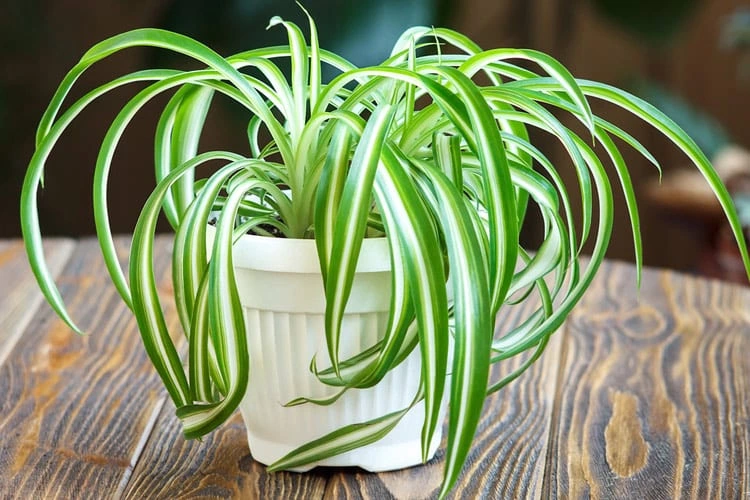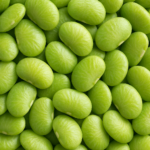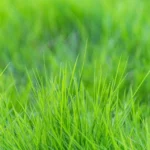
Welcome to our exploration of one of the most beloved houseplants around—the Spider Plant! Known for its lush green foliage and unique arching leaves, this resilient plant has captured the hearts of plant enthusiasts and casual gardeners alike. In this blog, we’ll delve into 25 fascinating facts about Spider Plants, from their origins and care tips to their remarkable air-purifying abilities. Whether you’re a seasoned plant parent or just starting your indoor garden, there’s something in here for everyone. Let’s uncover the secrets of the Spider Plant and discover why it deserves a spot in your home!
Origin: The Spider Plant is native to tropical and southern Africa, where it thrives in a variety of habitats, including grasslands and forest margins. Its adaptability to different environments has made it a popular choice for cultivation around the world. The plant’s ability to grow in less-than-ideal conditions has contributed to its reputation as a hardy houseplant, suitable for both novice and experienced gardeners.
Common Names: The Spider Plant is known by several common names, including the airplane plant, spider ivy, and ribbon plant. These names often reflect its unique appearance, with long, arching leaves resembling ribbons and the small plantlets that dangle from the mother plant, reminiscent of spiders on a web. The name “airplane plant” is derived from the plant’s ability to thrive in indoor environments, contributing to air quality and aesthetics.
Appearance: The Spider Plant features long, arching green leaves that can grow up to 2 feet (60 cm) in length. The leaves are typically lance-shaped and can be solid green or variegated with white or yellow stripes. This striking foliage makes the Spider Plant an attractive addition to any indoor space. The plant’s cascading growth habit, especially when it produces pups, creates a visually appealing display that can enhance the decor of homes and offices.
Growth: Spider Plants are known for their vigorous growth, often reaching lengths of up to 2 feet (60 cm) when well-cared for. Their rapid growth rate makes them an excellent choice for gardeners looking to quickly fill a space or create a lush indoor environment. Under optimal conditions, including adequate light and moisture, a Spider Plant can double in size within a year, showcasing its robust nature and ability to thrive in various settings.
Flowers: In the summer, Spider Plants produce small, white flowers that grow on long stems, adding a delicate touch to their overall appearance. These flowers are often borne in clusters and can attract pollinators if grown outdoors. While the flowering is not the primary attraction of the plant, it signifies the health and vitality of the Spider Plant. After flowering, the plant develops small offsets or pups, which can be propagated to create new plants.
Offsets: One of the most distinctive features of the Spider Plant is its ability to produce “pups” or offsets. These small plantlets grow on long stems that extend from the mother plant, often resembling spiders on a web. The pups can be left to grow on the parent plant or can be removed and potted separately to create new plants. This method of propagation makes Spider Plants an excellent choice for gardeners looking to expand their collection or share plants with friends and family.
Air Purification: Spider Plants are widely recognized for their ability to purify indoor air. They are capable of removing common pollutants such as formaldehyde and xylene, which can be found in household products and furnishings. Studies, including those conducted by NASA, have highlighted the effectiveness of Spider Plants in improving indoor air quality. By incorporating Spider Plants into living spaces, individuals can contribute to a healthier indoor environment while enjoying the aesthetic benefits of greenery.
Toxicity: One of the appealing aspects of the Spider Plant is that it is non-toxic to pets and humans. This makes it a safe choice for households with children and animals. Unlike some other houseplants that can pose risks if ingested, the Spider Plant can be enjoyed without concern. Its safety, combined with its air-purifying qualities and attractive appearance, contributes to its popularity as a houseplant in family-friendly environments.
Light Requirements: Spider Plants thrive in bright, indirect sunlight but are also remarkably adaptable to lower light conditions. While they prefer bright light for optimal growth, they can tolerate partial shade, making them suitable for various indoor locations, including offices and homes with limited natural light. However, prolonged exposure to direct sunlight can scorch their leaves, so it’s essential to find a balance that allows the plant to flourish without causing damage.
Watering: Spider Plants prefer to dry out between waterings, which helps prevent root rot—a common issue with overwatering. Ideally, the top inch of soil should be allowed to dry before the next watering. During the growing season (spring and summer), regular watering is essential, while in the dormant months (fall and winter), the plant requires less frequent watering. This watering strategy promotes healthy root development and overall plant vigor, ensuring that the Spider Plant remains lush and vibrant.
Soil Type: Spider Plants grow best in well-draining potting soil that retains some moisture but does not become waterlogged. A mix designed for houseplants or a combination of standard potting soil with perlite or sand can provide the ideal conditions. This type of soil allows for good aeration and drainage, which is crucial for preventing root rot. Spider Plants are adaptable, but using the right soil mix can significantly enhance their growth and overall health.
Temperature: The ideal temperature range for Spider Plants is between 65°F to 75°F (18°C to 24°C). They prefer a stable environment and can suffer if exposed to extreme temperature fluctuations. While they can tolerate temperatures outside this range, prolonged exposure to cold drafts or heat sources can stress the plant. Maintaining a consistent temperature within this range helps ensure optimal growth and vitality, allowing the Spider Plant to thrive indoors.
Humidity: Spider Plants prefer moderate to high humidity levels, which mimic their natural tropical habitat. They can adapt to lower humidity but may exhibit slower growth and leaf tip browning if the air is too dry. To increase humidity around the plant, gardeners can mist the leaves, use a pebble tray filled with water, or place a humidifier nearby. Maintaining adequate humidity levels not only benefits the Spider Plant but also contributes to a healthier indoor environment.
Fertilization: Spider Plants benefit from a balanced liquid fertilizer every 4-6 weeks during the growing season (spring and summer). Using a diluted all-purpose fertilizer can provide essential nutrients that promote healthy growth, vibrant foliage, and abundant flowering. However, it’s essential not to over-fertilize, as this can lead to salt buildup in the soil and harm the plant. During the fall and winter months, fertilization can be reduced or stopped altogether as the plant enters a dormant phase.
Lifespan: With proper care, Spider Plants can live for several years, often over 20 years. Their longevity is attributed to their hardy nature and adaptability to various indoor conditions. Regular maintenance, such as repotting and pruning, can help sustain their health and vigor over time. As they age, Spider Plants may require more attention to prevent issues like overcrowding or nutrient deficiencies, but with the right care, they can remain vibrant members of your indoor plant collection for decades.
Propagation: Spider Plants can be easily propagated by planting the pups in soil. When the offsets grow to a suitable size, typically a few inches long, they can be snipped from the mother plant and placed in a small pot with moist potting soil. This propagation method is straightforward and allows gardeners to expand their collection or share plants with others. The ability to produce numerous pups makes the Spider Plant an excellent choice for those looking to grow new plants without much effort.
Varieties: There are several varieties of Spider Plants, including the ‘Variegatum,’ which features green leaves with creamy white edges, and ‘Bonnie,’ known for its curly leaves. These variations offer different aesthetic options for plant enthusiasts, allowing them to choose a style that fits their decor. Each variety retains the hardiness and air-purifying qualities of the standard Spider Plant, making them equally suitable for indoor environments while adding diversity to plant collections.
Cultural Significance: In some cultures, Spider Plants are believed to bring good luck and prosperity. Their resilience and ability to thrive in various conditions have led to associations with positive energy and abundance. For instance, in Feng Shui, they are often placed in homes to enhance the flow of positive energy. This cultural significance adds an extra layer of appreciation for the Spider Plant, making it not just a decorative element but also a symbol of good fortune.
Growth Habit: Spider Plants are considered fast-growing plants and can double in size within a year under optimal conditions. Their growth habit includes producing long, arching leaves that create a lush, cascading effect. This vigorous growth makes them ideal for filling empty spaces in homes or offices quickly. Additionally, their ability to spread through offsets allows them to create a fuller appearance over time, enhancing their visual impact in indoor settings.
Pests: Common pests that may affect Spider Plants include spider mites, aphids, and mealybugs. While these pests can pose challenges, Spider Plants are generally resilient and can withstand some infestations. Regularly inspecting the plant for signs of pests and maintaining proper care, such as adequate watering and humidity, can help prevent infestations. If pests are detected, they can often be managed through natural remedies like insecticidal soap or neem oil, ensuring the plant remains healthy.
Repotting: Spider Plants should be repotted every couple of years to refresh the soil and provide space for growth. Repotting is essential as it prevents the plant from becoming root-bound, which can hinder its growth and health. When repotting, it’s best to choose a pot that is one size larger than the current one and to use fresh potting soil to replenish nutrients. This process typically occurs in the spring when the plant is actively growing, allowing it to recover quickly from the transition and continue thriving in its new environment.
Environmental Benefits: Spider Plants contribute to indoor humidity levels, which can be beneficial for respiratory health. As they transpire, they release moisture into the air, helping to maintain a balanced humidity level in the surrounding environment. This can be particularly advantageous in dry indoor conditions, especially during winter months when heating systems can lower humidity. By improving humidity, Spider Plants can help alleviate dry skin, respiratory issues, and static electricity, making them a practical choice for enhancing indoor air quality.
Container Gardening: Spider Plants are popular in container gardening due to their attractive foliage and ease of care. They can thrive in various pot sizes and styles, making them versatile for different decor themes. Container gardening allows for creative arrangements, and Spider Plants can be used in hanging baskets or as tabletop plants, showcasing their cascading growth. Their ability to adapt to various container types makes them suitable for both indoor and outdoor settings, providing flexibility for gardeners looking to enhance their spaces.
Cultural Adaptations: Spider Plants can adapt to various indoor environments, making them versatile houseplants. They are capable of thriving in different light conditions, from bright indirect light to lower light situations, which adds to their appeal for urban dwellers and those with less-than-ideal lighting. Their resilience allows them to flourish in diverse climates and home environments, making them a favorite among plant enthusiasts. This adaptability means that even those who may not have a green thumb can successfully grow and enjoy Spider Plants.
Popularity: Spider Plants are one of the most popular houseplants worldwide, appreciated for their hardiness and aesthetic appeal. Their ease of care, air-purifying qualities, and attractive foliage make them a staple in homes, offices, and public spaces. This widespread popularity has led to a variety of cultivars and adaptations, allowing plant lovers to choose from a range of styles. The Spider Plant’s reputation as a beginner-friendly plant has contributed to its enduring presence in the houseplant community, making it a go-to choice for many gardeners.
Frequently Asked Questions About Spider Plants
Plant Care
1. How often should I water my spider plant? Water your spider plant when the top inch of soil is dry to the touch. Avoid overwatering, as this can lead to root rot. During the growing season (spring and summer), you may need to water more frequently than in the fall and winter.
2. What is the best light for a spider plant? Spider plants thrive in bright, indirect light. Avoid placing them in direct sunlight, as this can burn the leaves. They can also tolerate low light conditions, but the growth may be slower and the leaves may become leggy.
3. What is the ideal temperature and humidity for a spider plant? Spider plants prefer average room temperatures between 65-80°F (18-27°C). They can tolerate cooler temperatures, but avoid exposing them to drafts or sudden temperature changes. These plants prefer moderate humidity, but they can adapt to drier conditions.
4. How often should I fertilize my spider plant? Fertilize your spider plant once a month during the growing season (spring and summer) with a balanced liquid fertilizer diluted to half strength. Avoid fertilizing in the fall and winter when the plant is dormant.
5. How do I propagate a spider plant? Spider plants produce plantlets (pups) on long stolons. Once the plantlets have developed a few leaves, you can detach them from the mother plant and pot them up individually.
Common Problems and Solutions
6. Why are my spider plant leaves turning yellow? Yellowing leaves can be caused by overwatering, underwatering, or nutrient deficiency. Check the soil moisture and adjust your watering schedule accordingly. If the problem persists, fertilize your plant with a balanced liquid fertilizer.
7. Why are my spider plant leaves turning brown? Brown tips on the leaves can be a sign of underwatering or low humidity. Increase the frequency of watering or mist the plant regularly.
8. Why are my spider plant leaves drooping? Drooping leaves can be caused by overwatering or underwatering. Check the soil moisture and adjust your watering schedule accordingly.
Benefits and Uses
9. What are the benefits of having a spider plant in my home? Spider plants are known to improve indoor air quality by removing pollutants such as formaldehyde and benzene. They are also low-maintenance and easy to care for, making them a popular choice for beginner gardeners.
10. Can spider plants be used as a houseplant? Yes, spider plants are excellent houseplants. They are adaptable to various indoor conditions and can thrive in a variety of lighting environments.









